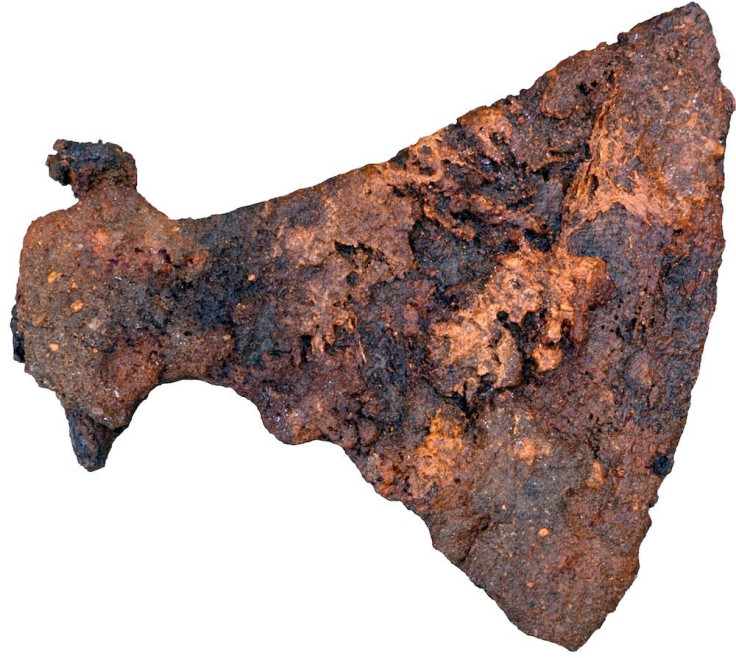Massive Viking axe found in 'death house' tomb belonged to great warrior
The weapon was recovered next to the remains of an ancient Viking couple.

One of the largest Viking axes ever found has been uncovered by a team of archaeologists from Denmark. The impressive weapon was buried in the tomb of a powerful couple from the local Viking community.
The discovery took place back in 2012, during construction works to create a new highway in Denmark, in the southern region of Harup. The workers stumbled upon a tomb – a type known as a 'death house' – measuring roughly 3.9 metres (13 feet) by 12.8 metres (42 feet). Built around 950 AD it contained three separate graves. A report in Danish, which is yet to be peer reviewed, now sums up the findings.
Archaeologists from the Silkeborg Museum in Denmark, who excavated the tomb, discovered an elite burial site, with two men and a woman put to rest near one another.
The woman and one of the men were found together in the main grave, while the third individual was in one of the two smaller graves. It is not known whether the couple were married or if they were siblings.
The axe was part of the many Viking artefacts which were buried with them. Many elements highlight the pair's high-ranking status in society. The woman, for example, wore clothes with gold and silver threads and was buried with a key, a symbol of status in the Viking era. Ceramics and two silver coins were also recovered next to her, as well as a small casket.
Scaring enemies
The most important and impressive object in the tomb, however, is without doubt the large Viking axe lying next to the man in the main grave. Unadorned, it was clearly not a decorative object intended as funeral offering, but had served as a deadly weapon in battles.
Its exact proportions are unknown, but it was so large it would have required the use of two hands to wield and was probably pretty difficult to swing. Archaeologists believe it would have been taken to battle primarily to scare enemies.
The axe was the only object associated with the remains of the male Viking in the main tomb, suggesting the deceased viewed himself as a warrior above all else.
Future research in the tomb will focus on analysing the four different types of woven cloth also found in the graves and a small casket found near the woman.
The researchers will also examine a single black hair which, incredibly, remained on her clothing. This potential source of DNA may be an opportunity to better understand who she and her warrior companion were.
© Copyright IBTimes 2025. All rights reserved.






















